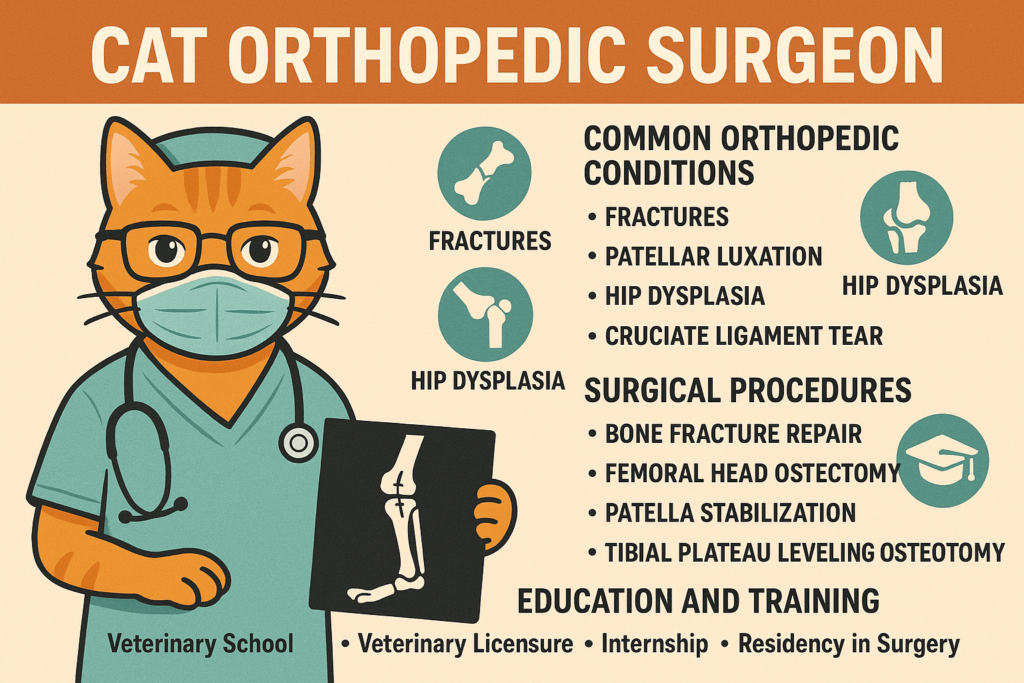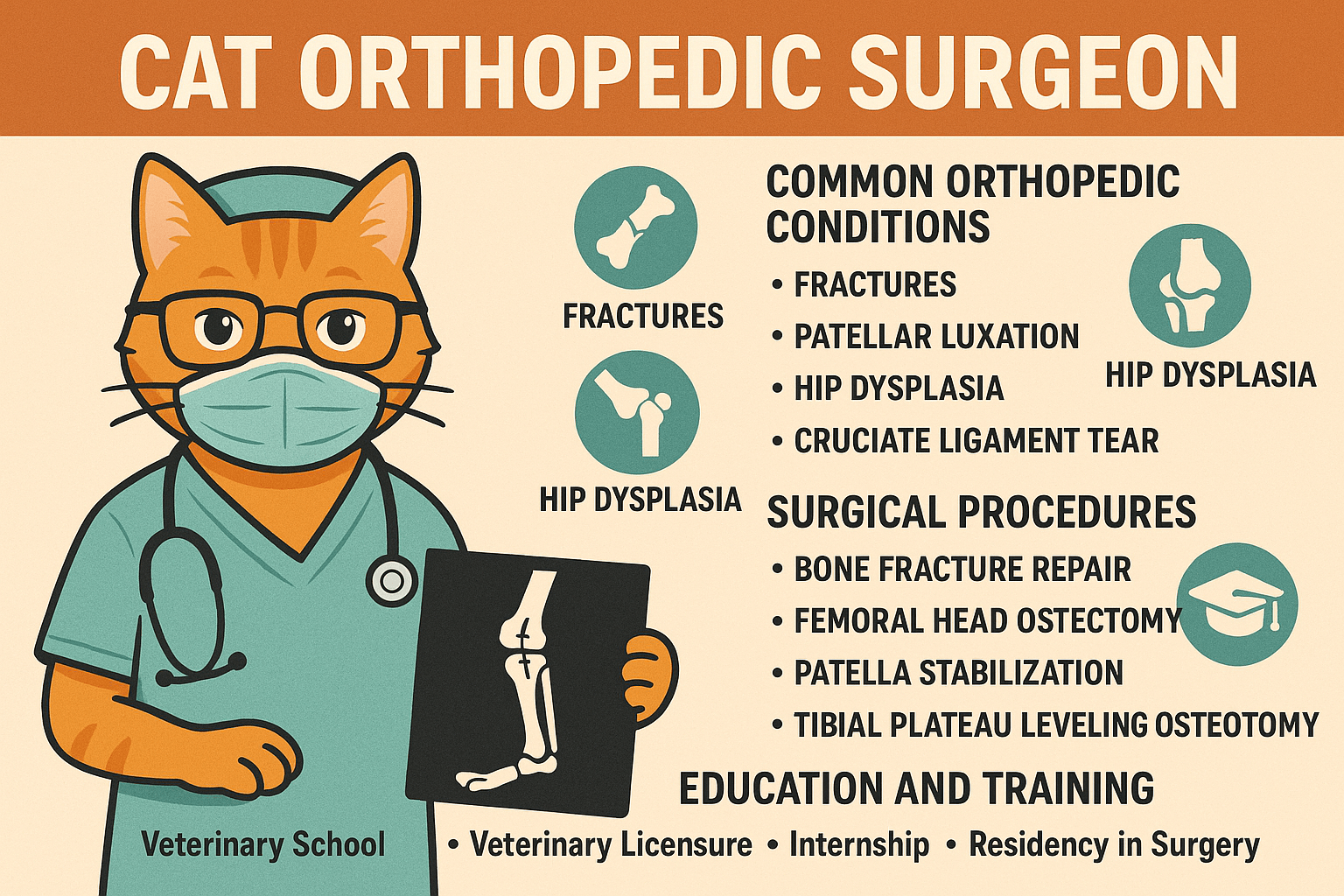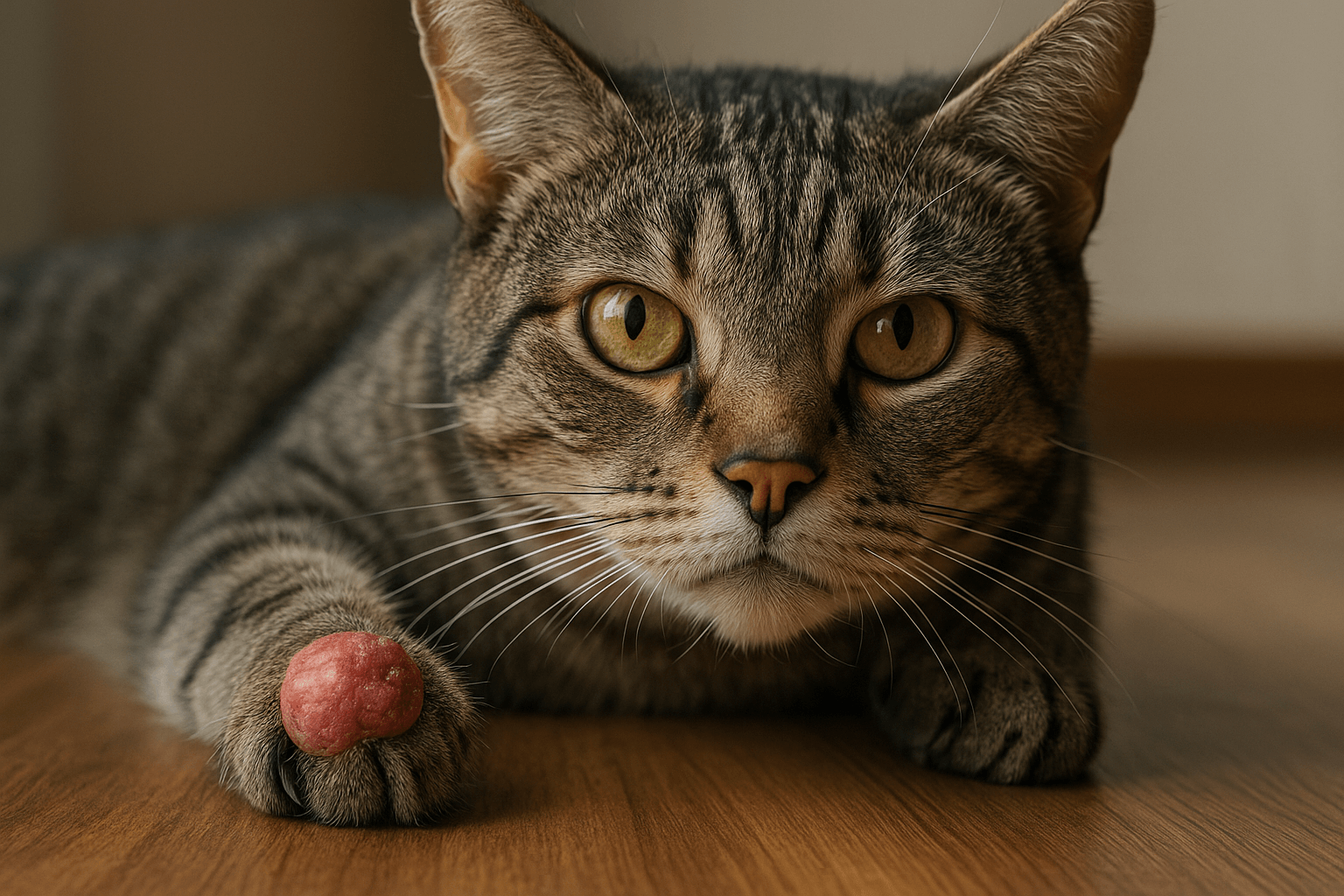What Does a Cat Orthopedic Surgeon Do?
When your feline friend experiences mobility issues, chronic pain, or injuries affecting their bones, joints, or muscles, a cat orthopedic surgeon may be the key to restoring their quality of life. These specialized veterinarians focus on diagnosing and treating musculoskeletal conditions in cats, ranging from fractures to congenital disorders. Whether it’s a simple sprain or a complex surgery, understanding the role of a cat orthopedic surgeon can help you make informed decisions about your pet’s health. In this blog post, we’ll explore what these experts do, when to consult one, and how they can help your cat lead a happier, healthier life.
Signs Your Cat May Need an Orthopedic Surgeon
Cats are masters at hiding pain, but certain behaviors and symptoms can indicate underlying orthopedic issues. Recognizing these signs early can prevent further complications and ensure timely treatment.
Limping or Favoring One Leg:
If your cat avoids putting weight on a specific limb, it could signal an injury or joint problem that requires professional attention.Difficulty Jumping or Climbing:
Cats naturally love to leap and explore high places. A reluctance to jump may point to joint stiffness or pain.Swelling or Visible Deformities:
Swollen limbs or abnormal angles in bones often indicate fractures or dislocations needing surgical intervention.Lethargy or Reduced Activity Levels:
A sudden drop in energy or interest in play can be a sign of discomfort caused by orthopedic issues.Audible Popping or Crunching Sounds:
Unusual noises when your cat moves may suggest joint instability or cartilage damage.
If you notice any of these symptoms, consulting a cat orthopedic surgeon can provide clarity and peace of mind for both you and your furry companion.

Common Conditions Treated by Cat Orthopedic Surgeons
Cat orthopedic surgeons specialize in a wide range of conditions affecting the musculoskeletal system. Here are some of the most common issues they address, along with their potential causes.
Fractures and Broken Bones:
Accidents, falls, or trauma can lead to fractures requiring precise surgical repair and stabilization.Hip Dysplasia:
This genetic condition affects the hip joint, causing pain and mobility issues, especially in larger breeds like Maine Coons.Luxating Patella (Kneecap Dislocation):
A kneecap that slips out of place can cause lameness and may require surgical correction.Osteoarthritis:
Degenerative joint disease is common in older cats and often requires a combination of surgery and long-term management.Ligament Tears or Sprains:
Injuries to ligaments, such as cranial cruciate ligament tears, can impair movement and necessitate surgical repair.
These conditions highlight the importance of seeking specialized care to address your cat’s unique needs effectively.
Check this guide 👉Understanding the Costs of Cat Surgery: Best 7 Expert Tips!
Check this guide 👉Understanding Cat Pyometra Surgery: Best 7 Expert Tips!
Check this guide 👉Understanding Cat Eye Surgery Costs: Best 7 Expert Tips!
Non-Surgical Treatments | Surgical Interventions |
|---|---|
Pain management medications | Fracture repair with plates or screws |
Physical therapy exercises | Joint replacement surgery |
Weight management programs | Ligament reconstruction |
Anti-inflammatory supplements | Corrective surgeries for deformities |
Laser therapy for pain relief | Arthroscopic procedures for joint issues |
How to Prepare for a Visit to a Cat Orthopedic Surgeon
A visit to a cat orthopedic surgeon can feel overwhelming, but preparation ensures a smooth experience for both you and your pet. Follow these steps to make the process easier.
Gather Medical Records:
Bring all relevant medical history, including X-rays, blood work, and notes from your primary veterinarian.Observe Your Cat’s Behavior:
Document changes in activity levels, eating habits, or mobility to provide detailed information during the consultation.Prepare Questions in Advance:
Write down questions about diagnosis, treatment options, recovery time, and costs to ensure you leave no concern unaddressed.Bring Comfort Items:
Pack your cat’s favorite blanket or toy to help them feel more secure during the appointment.Plan for Post-Visit Care:
Research recovery needs, such as restricted movement or medication schedules, so you’re ready to support your cat after surgery.
Proper preparation not only eases the process but also demonstrates your commitment to your cat’s well-being.
Recovery Tips After Orthopedic Surgery
Post-surgery recovery is critical for ensuring your cat heals properly and regains full mobility. These tips will help you create a supportive environment during this crucial period.
Limit Activity Levels:
Restrict jumping, running, or climbing to allow tissues to heal without strain.Administer Medications as Prescribed:
Follow the surgeon’s instructions carefully to manage pain and prevent infections.Monitor Incision Sites Daily:
Check for signs of redness, swelling, or discharge, which could indicate complications.Provide a Quiet Recovery Space:
Set up a calm, confined area where your cat can rest away from stressors like loud noises or other pets.Schedule Follow-Up Appointments:
Regular check-ins with the surgeon ensure proper healing and address any concerns promptly.
With diligent care and attention, your cat can recover successfully and return to their playful self.
Common Misconceptions About Cat Orthopedic Surgery
There are several misconceptions surrounding orthopedic surgery for cats. Understanding the truth behind these myths can alleviate fears and encourage proactive care.
Myth: Surgery Is Only for Severe Cases:
Early intervention often prevents minor issues from becoming major problems, improving long-term outcomes.Myth: Older Cats Can’t Handle Surgery:
Age alone isn’t a barrier—comprehensive evaluations determine whether surgery is safe for senior cats.Myth: Recovery Takes Too Long:
Advances in surgical techniques have shortened recovery times significantly, allowing quicker returns to normal activity.Myth: Surgery Is Always Expensive:
While costs vary, financing options and insurance plans can make surgery more affordable than expected.Myth: Cats Don’t Need Physical Therapy:
Post-operative rehab accelerates healing and reduces the risk of future injuries.
Dispelling these myths empowers cat owners to pursue the best possible care for their pets.
Preventative Measures to Avoid Orthopedic Issues
Prevention plays a crucial role in maintaining your cat’s musculoskeletal health. These proactive steps can reduce the likelihood of orthopedic problems.
Maintain a Healthy Weight:
Excess weight puts unnecessary strain on joints, increasing the risk of arthritis and injuries.Provide Safe Play Environments:
Minimize hazards like tall furniture or slippery floors that could lead to falls or accidents.Encourage Gentle Exercise:
Regular, low-impact activities promote joint health and muscle strength.Feed a Balanced Diet:
Nutrient-rich food supports bone density and overall vitality.Schedule Routine Vet Check-Ups:
Early detection of potential issues allows for timely interventions and better outcomes.
By prioritizing prevention, you can safeguard your cat’s mobility and minimize the need for surgical intervention.
Emotional Support During Recovery
Recovering from orthopedic surgery can be emotionally challenging for both cats and their owners. Providing emotional support fosters resilience and aids healing.
Stay Calm and Reassuring:
Cats pick up on their owner’s emotions—remaining calm helps them feel secure.Offer Plenty of Affection:
Gentle petting and soothing words reassure your cat during stressful times.Engage in Low-Impact Play:
Simple games using wand toys keep your cat entertained without straining their body.Celebrate Small Milestones:
Acknowledge progress, such as taking a few steps, to stay motivated throughout recovery.Seek Support if Needed:
Join online forums or local groups for advice and encouragement from fellow cat owners.
Emotional support not only boosts your cat’s morale but also strengthens the bond between you, making recovery a shared journey.
Frequently Asked Questions About Cat Orthopedic Surgeons
What qualifications should I look for in a cat orthopedic surgeon?
Look for board-certified veterinary surgeons with specialized training in orthopedics and a track record of successful outcomes.
How much does orthopedic surgery cost for cats?
Costs vary depending on the procedure but typically range from $1,500 to $5,000 or more.
Will my cat need physical therapy after surgery?
Many cats benefit from gentle rehabilitation exercises to rebuild strength and flexibility.
Can arthritis be treated surgically?
While surgery isn’t always necessary, procedures like joint replacements or arthroscopy may improve severe cases.
Is anesthesia safe for older cats?
Modern anesthesia protocols are generally safe, but pre-surgical screenings minimize risks for senior cats.
Investing in Your Cat’s Long-Term Mobility and Health
Orthopedic issues in cats can significantly impact their quality of life, but with the expertise of a skilled cat orthopedic surgeon, many conditions can be effectively managed or resolved. By recognizing warning signs, preparing for consultations, and supporting your cat through recovery, you play a vital role in their journey to wellness. Remember, investing in your cat’s musculoskeletal health not only restores their independence but also strengthens the bond you share. With the right care and compassion, your feline friend can enjoy a happy, active life for years to come.
Cuterebra Larvae in Cats: Best 7 Expert Tips! – Expert advice on signs, treatment & prevention of this rare but serious feline parasitic infestation.
Cuterebra Larvae in Dogs: Best 7 Expert Tips! – Expert advice on signs, treatment & prevention of this rare but serious parasitic infestation.
Cat Tumor on Paw: Best 7 Expert Tips! – Expert advice on signs, diagnosis, treatment & care for feline paw tumors.
Panacur Side Effects in Dogs: Best 7 Expert Tips! – Safe usage, common reactions & when to call the vet.





